Jun. 15, 2016, 6:13 AM
Original post: Tech Insider
 Germany's Chancellor Angela Merkel (wearing blue jacket) and delegates look at a computerized model of the earth "Geo-Cosmos" while visiting Miraikan (National Museum of Emerging Science and Innovation) in Tokyo. Reuters/Issei Kato
Germany's Chancellor Angela Merkel (wearing blue jacket) and delegates look at a computerized model of the earth "Geo-Cosmos" while visiting Miraikan (National Museum of Emerging Science and Innovation) in Tokyo. Reuters/Issei Kato
The following is an excerpt from "Half-Earth: Our Planet's Fight For Life," by Edward O. Wilson.
The global conservation movement has temporarily mitigated but hardly stopped the ongoing extinction of species.
The rate of loss is instead accelerating.
If biodiversity is to be returned to the baseline level of extinction that existed before the spread of humanity, and thus saved for future generations, the conservation effort must be raised to a new level.
The only solution to the “Sixth Extinction” is to increase the area of inviolable natural reserves to half the surface of the Earth or greater.
This expansion is favored by unplanned consequences of ongoing human population growth and movement and evolution of the economy now driven by the digital revolution. But it also requires a fundamental shift in moral reasoning concerning our relation to the living environment.
At the end of the day, the central question of biodiversity conservation is how many of the surviving wildlands and the species within them will be lost before the extinction rate is returned to the prehuman level.
The prehuman rate is now put at one to ten species extinguished per million species each year.
In terms of a human life span that primordial rate is infinitesimal, essentially zero in conservation thinking.
(Keep in mind also that as many as six million contemporary species remain undiscovered by scientists.)
Yet it also means that the current rate of extinction of the well-known species is up by a multiple of close to one thousand and accelerating — despite the heroic best efforts of the global conservation movement.
Unstanched hemorrhaging has only one end in all biological systems: death for an organism, extinction for a species.
Researchers who study the trajectory of biodiversity loss are alarmed that within the century an exponentially rising extinction rate might easily wipe out most of the species still surviving at the present time.
 Harvard biology professor Edward O. Wilson.AP/Chitose Suzuki
Harvard biology professor Edward O. Wilson.AP/Chitose Suzuki
The crucial factor in the life and death of species is the amount of suitable habitat left to them.
The relation between habitat area and number of species has been calculated and refined many times and cited often in scientific and popular literature.
It is that a change in area of a habitat, up or down, results in a change in the sustainable number of species by the third to fifth root, most commonly close to the fourth root.
In this last case, when, for example, 90 percent of the area is removed, the number that can persist sustainably will descend to about a half. Such is the actual condition of many of the most species-rich localities around the world, including Madagascar, the Mediterranean perimeter, parts of continental southwestern Asia, Polynesia, and many of the islands of the Philippines and the West Indies. If 10 percent of the remaining natural habitat were then also removed—a team of lumbermen might do it in a month—most or all of the surviving resident species would disappear.
 A Lemur hangs on a tree in Madagascar's Mantadia National Park. AP/Jerome Delay
A Lemur hangs on a tree in Madagascar's Mantadia National Park. AP/Jerome Delay
If, on the other hand, with the relation of sustainable species to the area of their habitat at the fourth root (the approximate median value), the fraction protected in one-half the global surface is about 85 percent. That fraction can be increased by including within the one-half Earth “hot spots,” where the largest numbers of endangered species exist.
Today every sovereign nation in the world has a protected area system of some kind. All together the reserves number about a hundred sixty-one thousand on land and sixty-five hundred over marine waters. According to the World Database on Protected Areas, a joint project of the United Nations Environmental Program and the International Union for Conservation of Nature, they occupied by 2015 a little less than 15 percent of Earth’s land area and 2.8 percent of Earth’s ocean area. The coverage is increasing gradually. This trend is encouraging. To have reached the existing level is a tribute to those who have led and participated in the global conservation effort. But is the level enough to not just slow but halt the acceleration of species extinction?
Unfortunately, it is in fact nowhere close to enough. Might the upward trend conservation efforts have set be enough during the rest of the century to save most of Earth’s biodiversity? That is problematic, but I doubt that it can be, and even then there will be far less biodiversity to save.
 REUTERS/Yannis Behrakis
REUTERS/Yannis Behrakis
Even in the best scenarios of conventional conservation practice the losses should be considered unacceptable by civilized peoples. The declining world of biodiversity cannot be saved by the piece meal operations in current use alone. It will certainly be mostly lost if conservation continues to be treated as a luxury item in national budgets. The extinction rate our behavior is now imposing on the rest of life, and seems destined to continue, is more correctly viewed as the equivalent of a Chicxulub-sized asteroid strike played out over several human generations.
The only hope for the species still living is a human effort commensurate with the magnitude of the problem. The ongoing mass extinction of species, and with it the extinction of genes and ecosystems, ranks with pandemics, world war, and climate change as among the deadliest threats that humanity has imposed on itself. To those who feel content to let the Anthropocene evolve toward what ever destiny it mindlessly drifts, I say please take time to reconsider. To those who are steering the growth of reserves worldwide, let me make an earnest request: don’t stop, just aim a lot higher.
Populations of species that were dangerously small will have space to grow. Rare and local species previously doomed by development will escape their fate. The unknown species, apparently at least six million in number, will no longer remain silent and thereby be put at highest risk. People will have closer access to a world that is complex and beautiful beyond our present imagining. We will have more time to put our own house in order for future generations. Living Earth, all of it, can continue to breathe.
Excerpted from "Half-Earth: Our Planet’s Fight for Life," by Edward O. Wilson. Copyright © 2016 by Edward O. Wilson. All rights reserved.
 Germany's Chancellor Angela Merkel (wearing blue jacket) and delegates look at a computerized model of the earth "Geo-Cosmos" while visiting Miraikan (National Museum of Emerging Science and Innovation) in Tokyo. Reuters/Issei Kato
Germany's Chancellor Angela Merkel (wearing blue jacket) and delegates look at a computerized model of the earth "Geo-Cosmos" while visiting Miraikan (National Museum of Emerging Science and Innovation) in Tokyo. Reuters/Issei KatoThe following is an excerpt from "Half-Earth: Our Planet's Fight For Life," by Edward O. Wilson.
The global conservation movement has temporarily mitigated but hardly stopped the ongoing extinction of species.
The rate of loss is instead accelerating.
If biodiversity is to be returned to the baseline level of extinction that existed before the spread of humanity, and thus saved for future generations, the conservation effort must be raised to a new level.
The only solution to the “Sixth Extinction” is to increase the area of inviolable natural reserves to half the surface of the Earth or greater.
This expansion is favored by unplanned consequences of ongoing human population growth and movement and evolution of the economy now driven by the digital revolution. But it also requires a fundamental shift in moral reasoning concerning our relation to the living environment.
At the end of the day, the central question of biodiversity conservation is how many of the surviving wildlands and the species within them will be lost before the extinction rate is returned to the prehuman level.
The prehuman rate is now put at one to ten species extinguished per million species each year.
In terms of a human life span that primordial rate is infinitesimal, essentially zero in conservation thinking.
(Keep in mind also that as many as six million contemporary species remain undiscovered by scientists.)
Yet it also means that the current rate of extinction of the well-known species is up by a multiple of close to one thousand and accelerating — despite the heroic best efforts of the global conservation movement.
Unstanched hemorrhaging has only one end in all biological systems: death for an organism, extinction for a species.
Researchers who study the trajectory of biodiversity loss are alarmed that within the century an exponentially rising extinction rate might easily wipe out most of the species still surviving at the present time.
 Harvard biology professor Edward O. Wilson.AP/Chitose Suzuki
Harvard biology professor Edward O. Wilson.AP/Chitose SuzukiThe crucial factor in the life and death of species is the amount of suitable habitat left to them.
The relation between habitat area and number of species has been calculated and refined many times and cited often in scientific and popular literature.
It is that a change in area of a habitat, up or down, results in a change in the sustainable number of species by the third to fifth root, most commonly close to the fourth root.
In this last case, when, for example, 90 percent of the area is removed, the number that can persist sustainably will descend to about a half. Such is the actual condition of many of the most species-rich localities around the world, including Madagascar, the Mediterranean perimeter, parts of continental southwestern Asia, Polynesia, and many of the islands of the Philippines and the West Indies. If 10 percent of the remaining natural habitat were then also removed—a team of lumbermen might do it in a month—most or all of the surviving resident species would disappear.
 A Lemur hangs on a tree in Madagascar's Mantadia National Park. AP/Jerome Delay
A Lemur hangs on a tree in Madagascar's Mantadia National Park. AP/Jerome DelayIf, on the other hand, with the relation of sustainable species to the area of their habitat at the fourth root (the approximate median value), the fraction protected in one-half the global surface is about 85 percent. That fraction can be increased by including within the one-half Earth “hot spots,” where the largest numbers of endangered species exist.
Today every sovereign nation in the world has a protected area system of some kind. All together the reserves number about a hundred sixty-one thousand on land and sixty-five hundred over marine waters. According to the World Database on Protected Areas, a joint project of the United Nations Environmental Program and the International Union for Conservation of Nature, they occupied by 2015 a little less than 15 percent of Earth’s land area and 2.8 percent of Earth’s ocean area. The coverage is increasing gradually. This trend is encouraging. To have reached the existing level is a tribute to those who have led and participated in the global conservation effort. But is the level enough to not just slow but halt the acceleration of species extinction?
Unfortunately, it is in fact nowhere close to enough. Might the upward trend conservation efforts have set be enough during the rest of the century to save most of Earth’s biodiversity? That is problematic, but I doubt that it can be, and even then there will be far less biodiversity to save.
 REUTERS/Yannis Behrakis
REUTERS/Yannis BehrakisEven in the best scenarios of conventional conservation practice the losses should be considered unacceptable by civilized peoples. The declining world of biodiversity cannot be saved by the piece meal operations in current use alone. It will certainly be mostly lost if conservation continues to be treated as a luxury item in national budgets. The extinction rate our behavior is now imposing on the rest of life, and seems destined to continue, is more correctly viewed as the equivalent of a Chicxulub-sized asteroid strike played out over several human generations.
The only hope for the species still living is a human effort commensurate with the magnitude of the problem. The ongoing mass extinction of species, and with it the extinction of genes and ecosystems, ranks with pandemics, world war, and climate change as among the deadliest threats that humanity has imposed on itself. To those who feel content to let the Anthropocene evolve toward what ever destiny it mindlessly drifts, I say please take time to reconsider. To those who are steering the growth of reserves worldwide, let me make an earnest request: don’t stop, just aim a lot higher.
Populations of species that were dangerously small will have space to grow. Rare and local species previously doomed by development will escape their fate. The unknown species, apparently at least six million in number, will no longer remain silent and thereby be put at highest risk. People will have closer access to a world that is complex and beautiful beyond our present imagining. We will have more time to put our own house in order for future generations. Living Earth, all of it, can continue to breathe.
Excerpted from "Half-Earth: Our Planet’s Fight for Life," by Edward O. Wilson. Copyright © 2016 by Edward O. Wilson. All rights reserved.
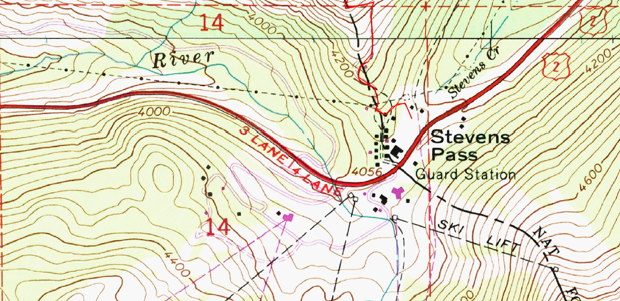 An example of a modern-day relief map using contour lines. (
An example of a modern-day relief map using contour lines. (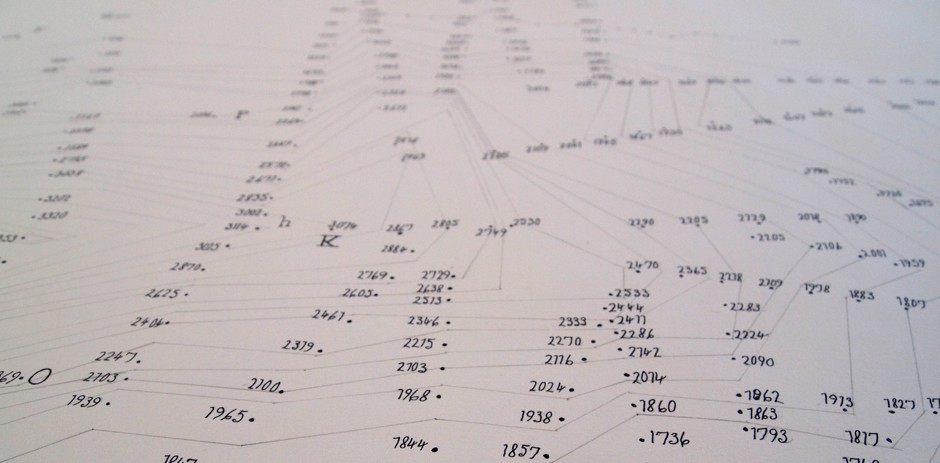 A detail from Rann’s re-created map. (Courtesy of
A detail from Rann’s re-created map. (Courtesy of 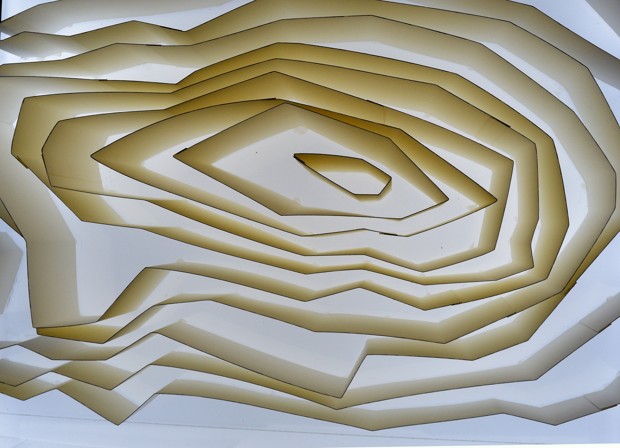 Rann’s 3D model of Schiehallion, according to Hutton’s contour lines. (Courtesy of
Rann’s 3D model of Schiehallion, according to Hutton’s contour lines. (Courtesy of 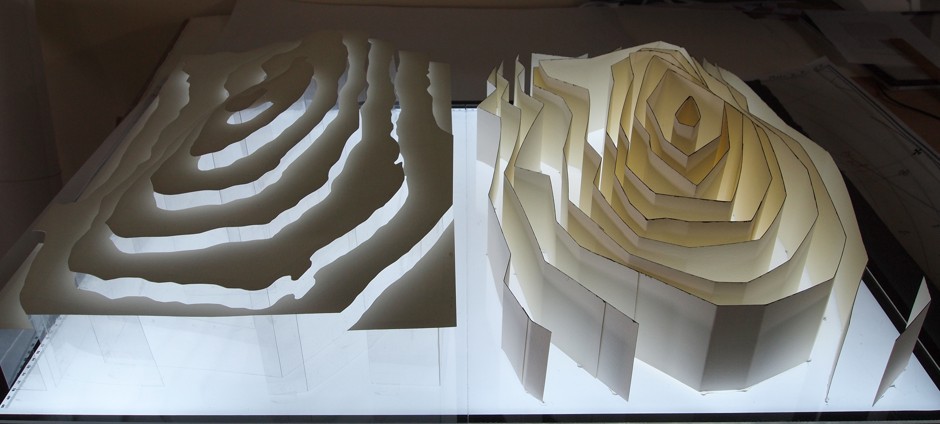 Rann’s 3D model of Schiehallion, according to modern Ordnance Survey contour lines (left), compared to Rann’s 3D model of Schiehallion following Hutton’s contour lines. (Courtesy of
Rann’s 3D model of Schiehallion, according to modern Ordnance Survey contour lines (left), compared to Rann’s 3D model of Schiehallion following Hutton’s contour lines. (Courtesy of 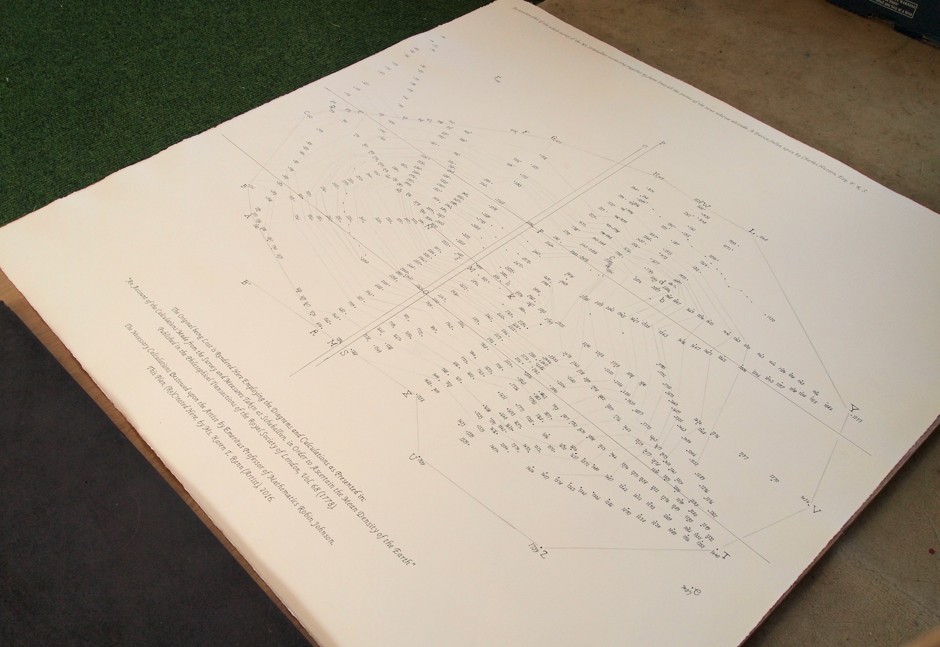 Karen Rann’s re-creation of the original Hutton survey map. (Courtesy of
Karen Rann’s re-creation of the original Hutton survey map. (Courtesy of 






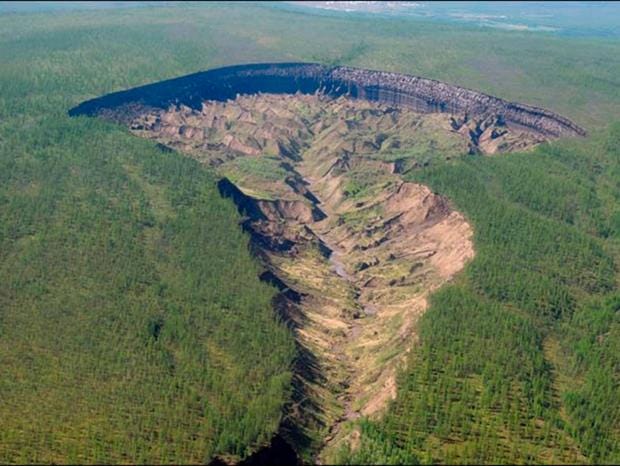 The Batagaika crater in Siberia is widening by up to 20m a year and is a sign of the rate at which the world is warming
The Batagaika crater in Siberia is widening by up to 20m a year and is a sign of the rate at which the world is warming

 Canada's Foreign Minister Stephane Dion shakes hands with Myanmar's Foreign Minister Aung San Suu Kyi before their meeting at the Ministry of Foreign Affairs in Naypyitaw in April. "Dion has already coined a name for Canadian foreign policy, namely that it will be based on 'responsible conviction,' a term that seems to mean we’ll listen to other countries rather than tell them what to do," writes Richard Gwyn. (REUTERS)
Canada's Foreign Minister Stephane Dion shakes hands with Myanmar's Foreign Minister Aung San Suu Kyi before their meeting at the Ministry of Foreign Affairs in Naypyitaw in April. "Dion has already coined a name for Canadian foreign policy, namely that it will be based on 'responsible conviction,' a term that seems to mean we’ll listen to other countries rather than tell them what to do," writes Richard Gwyn. (REUTERS)